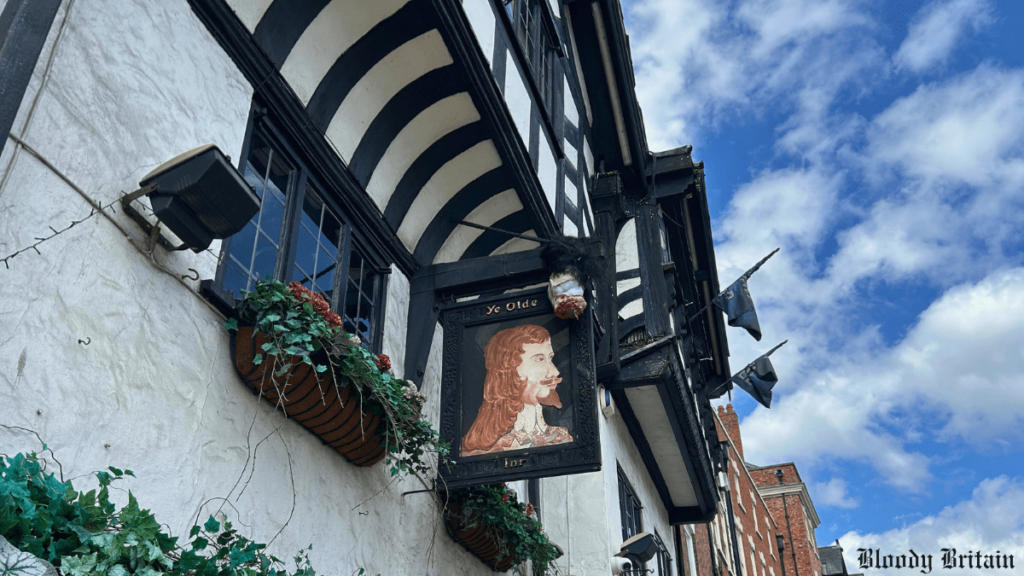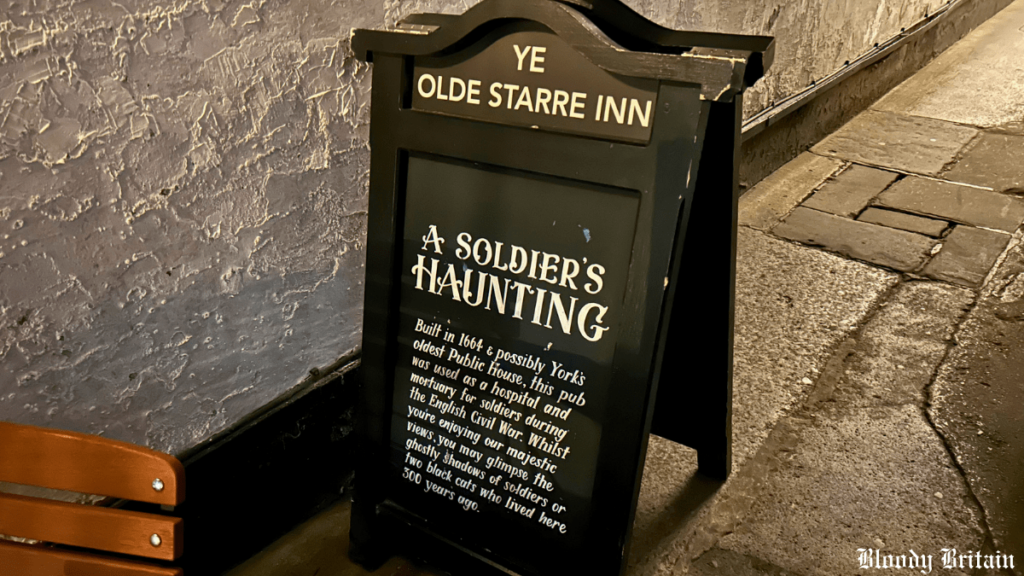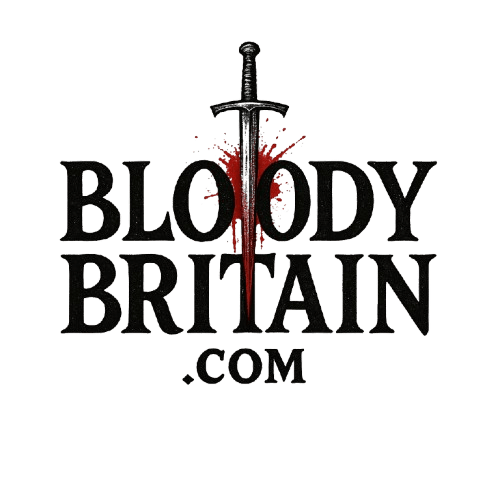One of the great things about England is that they have a bunch of pubs. Another great thing about England is that it has a genuine history because actual things happened here.
And quite often, there is overlap between these two concepts. This is because people throughout history have enjoyed getting shitfaced, including many of your favorite historical figures.
”The pub is named for the fact that King Charles I stayed close by during the height of the English Civil War. But it is more famous for the many, many ghosts that reportedly haunt the property.”
The upshot of this is that England has a lot of ye olde pubs, and some of those ye olde pubs were haunted by some of the English Civil War’s most (in)famous figures.
And it’s these pubs that we’ll be looking at today. From plotting to murders to the lingering ghosts of the vengeful and wronged, I present some of the greatest British pubs connected to the English Civil War.
Ye Olde Kings Head, Chester
Found in the ancient walled Roman city of Chester, few pubs can claim quite the pedigree that Ye Olde Kings Head can.

The foundations date all the way back to the 13th century, but the current building was erected in 1608.
It originally served as the home of Chester Castle’s castellan and later became the property of Lord Randle Holm, who housed visiting merchants there.
The pub is named for the fact that King Charles I stayed close by during the height of the English Civil War. But it is more famous for the many, many ghosts that reportedly haunt the property.
Bedroom #4 is reputedly haunted by the ghost of a child, and poltergeist activity has been reported. A man in black has also been glimpsed, with one woman in 1982 having a particularly close call with the mystery specter.
The pub is such a hotspot for paranormal activity that it has been featured on several reputable ghost-hunting shows, with Paranormal’s Daniel Moss – something of an expert on the topic – stating that he had “evidence that even the skeptics cannot debunk”.
Ye Olde Man And Scythe, Bolton, is Linked to the Beheading of the Earl of Derby
Ye Old Man And Scythe is one of the oldest pubs in Britain, tracing its lineage all the way back to 1251.
Its name doesn’t quite have that pedigree, however – “ye olde” is a modern invention used to suggest a connection to the medieval period, but was never actually used back in the day.
The name itself comes from the Pilkington family, an ancient and noble family with roots in the Lancashire area.
The family’s coat of arms features the grim reaper making use of a scythe – hence the name of the pub.
The pub has been rebuilt since its inception in 1251 – a datestone inside lists 1636 as the date of at least one rebuild.
The cellar is the only surviving original structure within the pub, although some beams from older periods are still in use.
The pub was owned by the family of the Earl of Derby, a Royalist who was complicit in the Massacre of Bolton during the Civil War.
The Earl was held at the pub prior to being beheaded just in front of it. Visitors to the pub can see where he sat, as well as the exact place he was executed.
Ye Olde Starre Inne in York Was a Military Field Hospital for Parliamentarian Troops
You may be noticing a pattern here – at some point during English history, publicans really took a liking to the pseudo-archaic invention “ye olde” and started plastering it across every pub with more than a few hundred years on the clock. Ye Olde Starre Inne is no exception.

The name may be a little phony, but the pub itself is not – dating back to the mid-1500s, it’s the oldest pub in York.
It was renamed “The Starre” at some point in the 17th century, and in 1644 it was used to house casualties following one of the Civil War’s biggest battles – the Battle of Marston Moor.
The pub changed hands a few times over the following years, and its landlord in 1733, Thomas Bulman, reached an agreement with two shop owners on Stonegate (a historic street in York) to hang a sign up advertising the pub. A sign has been hung in that location since then.
The Black Bull, Otley, Was Drunk Dry by Troops Before the Battle of Marston Moor
Dating back to the 16th century and the oldest pub in the Yorkshire market town of Otley, The Black Bull has no need of faux-archaic flourishes in order to make its pedigree plain.
The Black Bull has seen no small number of renovations over the years – so much so, in fact, that a great many architectural secrets have been buried and then rediscovered in later years.
During refurbishments in 1971, a soot-blackened fireplace and an old wooden door were discovered – and slated to be destroyed during those refurbishment proceedings.
It was only after the licensee prevailed upon the owning brewery to abort the refurbishments that the fireplace and door were saved.
The Black Bull’s biggest claim to fame, however, is also linked to the fateful Battle of Marston Moor. Cromwell’s men made camp just outside Otley, and on the eve of the battle, they drank the pub dry. Visitors to the pub in 2024 can still see a plaque marking the occasion.
Crown And Treaty, London Was Where Charlie and Cromwell Hashed Out the Treaty of Uxbridge
This pub, found at Uxbridge, London, has a claim to be the most historically significant pub linked to the English Civil War.
It is there that Charles I met with Cromwell and his Parliamentarians to hash out the Treaty of Uxbridge in 1645 – a treaty that would ultimately fail, but be of extreme significance to the overall war nonetheless.
The illustration on the Crown and Treaty’s sign is truly a thing of beauty. It features a smirking, self-satisfied Cavalier touching flagons with a dour and unamused Parliamentarian and is worth the visit alone.
In a shocking lack of respect for history, the elaborate wooden paneling from one of the pub’s rooms was sold to decorate an office in the Empire State Building in 1924.
Thankfully, it was returned to England as a coronation gift for Elizabeth II in 1953.
Ye Olde White Harte in Hull is Often Alleged to Be Ground Zero for the Siege of Hull
Ye Olde White Harte, located in the East Yorkshire city of Hull, dates all the way back to 1640 – but wasn’t made into a pub until the 1730s.
It’s infamous amongst residents of Hull due to its centrality to a number of plots over the years – some of which actually happened, and some of which didn’t.
The sharp-eyed will notice that the pub wasn’t a pub during the English Civil War. Many Hullfolk (the demonym we’re forced to assume people from Hull use) believe that it was in the fittingly-named “plotting room” found upstairs that Sir John Hotham, Governor of Hull, schemed to light the spark that bloomed into the English Civil War.
He did this, so the myth goes, by refusing to allow King Charles I entry to the city – thus sparking the Siege of Hull and the start of the Civil War.
”During my recent visit to the pub, a witty patron adding that the phantom civil war drums might have just been a rogue McDonald’s carton rattling around between the bins. Who knows?”
This plot was eventually debunked, but another, later plot did actually take part in the pub. It was there that the Protestant Deputy Governor hatched a plan to overthrow the Catholic Governor during the aftermath of the Glorious Revolution. Unlike the Civil War myth, this one actually happened – and was successful.
The pub is reputedly extremely haunted, with several verified deaths having taken place on the premises.
There is a skull of unknown provenance kept at the bar, which drinkers are more than welcome to view when visiting.
Ye Olde Boot Inn, Chester, Was a Royalist Meeting Place
We return to the walled city of Chester to visit Ye Olde Boot Inn, a historic building dating to the middle of the 17th century.
It opened its doors as a pub in 1643 and is notable for the fact that its ground-level floor used to be in an ‘undercroft’ – a spooky medieval-era cellar.
During the height of the English Civil War, and prior to the city eventually falling to the Parliamentarians, the Boot Inn was said to be a Royalist meeting place and, in later years, a brothel!
These days, the inn is somewhat infamous in the modern era for its draconian rules and regulations. It’s a “digital-free zone,” meaning no phones or devices of any kind are permitted on the premises.
If you’re wondering how you can pay without using your phone, fret not – it’s cash only at the Boot.
Furthermore, it’s over-18s only at the Boot, and swearing is strictly forbidden. If nothing else, they’ve done an amazing job of capturing the feeling of Puritan England some 300-odd years later.
The Royal Standard Of England, Forty Green, Suffered a String of Executions
Tracing its lineage all the way back to 1213, the Royal Standard of England is England’s oldest surviving pub. And what a lineage it has created over the past 800 years.
The Royal Standard was originally called “Se Scip” (ye olde English for “The Ship”) way back when. Only after the Stuart Restoration in the 1660s did it gain its current name in recognition of the pub’s contribution to the Royalist effort.
These contributions, during the Civil War, saw a rash of executions carried out by the Roundheads by way of retaliation.
Among the victims of these executions were the pub landlord and a dozen Irish Cavaliers – one of whom was a 12-year-old drummer. Legend has it that his drums can still be heard in the car park…
However, during my recent visit to the pub, a witty patron added that the phantom Civil War drums might have just been a rogue McDonald’s carton rattling around between the bins. Who knows?
Civil War Drinking Holes Still Litter the Land
From random skulls to Puritan-esque restrictions on sweating, the spirit of the English Civil War is still alive and well across the country – as long as you know where to look.
And with this ale-soaked map, you’ll definitely know where to look. Raise a flagon of ale in thanks to Bloody Britain the next time you hit up these genuine Civil-War-era pubs!
Do you have any Civil War drinking holes you’d love to see added to this list? Drop a comment below, and I’ll consider visiting it and adding it to the list!



[…] Surviving English Civil War Pubs: An Ale-Splattered Adventure […]
[…] Surviving English Civil War Pubs: An Ale-Splattered Adventure […]
[…] Surviving English Civil War Pubs: An Ale-Splattered Adventure […]